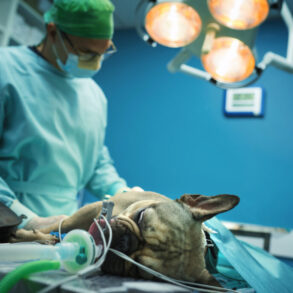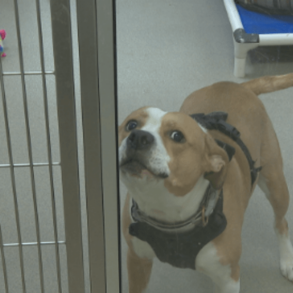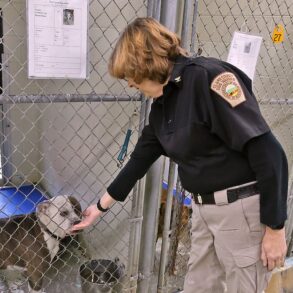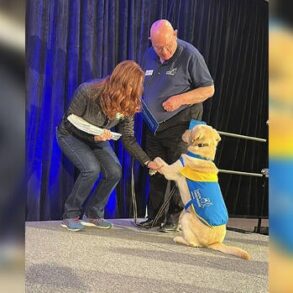Thanks to their excellent smelling ability, dogs have been used for hundreds of years to hunt down wild game and search for criminals. At airports, they help identify explosives and illicit drugs. In disaster situations, they can rescue survivors and find human remains.
But each dog can only be trained to detect one class of odor compounds, which limits the range of smells it’s able to detect. Training costs tens of thousands of dollars and takes several months. For Florida startup Canaery, the solution is merging canines with neurotechnology to allow them to detect everything from bombs and other contraband to human diseases and environmental toxins—no specialized training needed.
The company is building what it calls a nose–computer interface to decode odors that an animal smells in real time. “How much easier would it be if you just had to press a button and take a vapor sample and instantly get a readout?” says Canaery’s CEO Gabriel Lavella. (And yes, the company takes its name from the yellow bird once used to detect toxic gases in coal mines.)
A handful of firms, including Elon Musk’s Neuralink, are building brain–computer interfaces for humans. Canaery wants to bring the same technology to dogs.
The company has partnered with the Lawrence Livermore National Laboratory, part of the US Department of Energy, to develop an array that reads odor information taken from animals. Thinner than a piece of tissue paper and a quarter the size of a US postage stamp, it’s placed on the surface of the animal’s olfactory bulb—the brain’s receiving center for smell. When an animal picks up a scent, neurons fire in the olfactory bulb. The array collects these neural signals and sends them to a small, wireless computer unit that decodes them.
So far the array has been tested in rats, with a version for dogs coming later, Lavella says. In a demo video viewed exclusively by WIRED, a Canaery scientist uses a wand to capture an air sample from four different petri dishes, each containing a different odorant. The wand beeps and sends the odor molecules through a tube to a pod that houses a rat equipped with the nose–computer interface. A few seconds after the animal smells the odor, the scent information is sent to a phone that sits on top of the pod. A mobile app displays the name of the compound the animal smells, as well as a quality score that takes into account the accuracy and the concentration of molecules.
Currently, Canaery’s rat prototype can detect arson accelerants and smokeless powder used in ammunition, as well as methamphetamine, cocaine, and fentanyl.
In mammals, the nose and brain work together to detect smells. When odor molecules enter the nostrils, they bind to olfactory receptors. Humans have about 450 types of olfactory receptors, while dogs have twice as many. Every odor stimulates different combinations of receptor types, producing a unique electrical signal. That signal is sent to the olfactory bulb to be processed. Lavella likens the surface of the olfactory bulb to a checkerboard. When an odor comes in, squares light up on the checkerboard in a specific pattern.
Canaery uses AI software to recognize those patterns and associate them with odors. After implanting the array, scientists expose the animal to an odor to train the AI models. Lavella says the software can be trained in about three sessions. During those sessions, scientists present more than two dozen samples of the same odor to the animal. Later, the animal is exposed to the odor again to validate the AI models.
The current array that’s implanted in the demo rat has 128 electrodes that capture neural signals from the olfactory bulb. Researchers at the Lawrence Livermore National Laboratory are working on a new array with 767 electrodes to capture more information. “That next-generation device will allow us to have greater performance in the field against complex background odors and confounding vapors that are in the air,” Lavella says.
Decoding smell isn’t a new endeavor by any means. Researchers have been working on “e-nose” technology to detect odors for the past 40 years. These devices use chemical sensors to convert odor molecules into electric signals, which are then analyzed by a pattern-recognition system to identify the odor source. But these devices historically have been able to detect only a small range of odors.
“Animals can do things that we can’t get current sensors to do, so that’s a smart way to get around that problem,” says Joel Mainland, an olfaction researcher at the Monell Chemical Senses Center, a nonprofit research institute in Philadelphia.
Matt Angle, CEO of Austin-based Paradromics, which is developing a brain-computer interface for humans, says the technology is a pragmatic way to digitize smell because “it leverages the very hard-to-engineer physiology of olfaction while still getting the benefit of digitization and rapid analysis.”
Canaery and its collaborators imagine all kinds of uses for its odor-detection system. “Airports and other forms of checkpoints are probably the most obvious use case,” says Travis Massey, a neural interface researcher at Lawrence Livermore. The nose-computer interface could be used to sniff out people entering schools, stadiums, shopping malls, or amusement parks—anyplace where a large number of people are gathering.
Other applications could include detecting invasive species, identifying environmental hazards, or diagnosing diseases. During the Covid-19 pandemic, dogs were trained to successfully sniff out the coronavirus in patient samples of sweat, saliva, and urine. Other diseases, such as cancer and Parkinson’s disease, produce unique odor signatures that can be detected by sniffer dogs. Hotel chains even use dogs to find bed bug infestations.
But installing a nose-computer interface in dogs no doubt raises questions about safety and animal welfare. In rats, the array can be inserted into the nose via a minimally invasive procedure. The company is still working out how to implant the device in dogs. At least in rats, the array doesn’t damage tissue or elicit a strong immune response. “We don’t anticipate any longevity issues or chronic issues having an effect on the animal’s quality of life,” Lavella says.
Human brain-computer interfaces involve some amount of risk, but they’re also designed to restore functionality for people with paralysis and treat other medical conditions. Those risks may be acceptable to the people using them. Canaery’s nose-computer interface, however, would be implanted in an otherwise healthy animal. Ultimately, the benefits of the technology will have to be weighed against any potential risks to man’s best friend.
This post was originally published on this site be sure to check out more of their content.




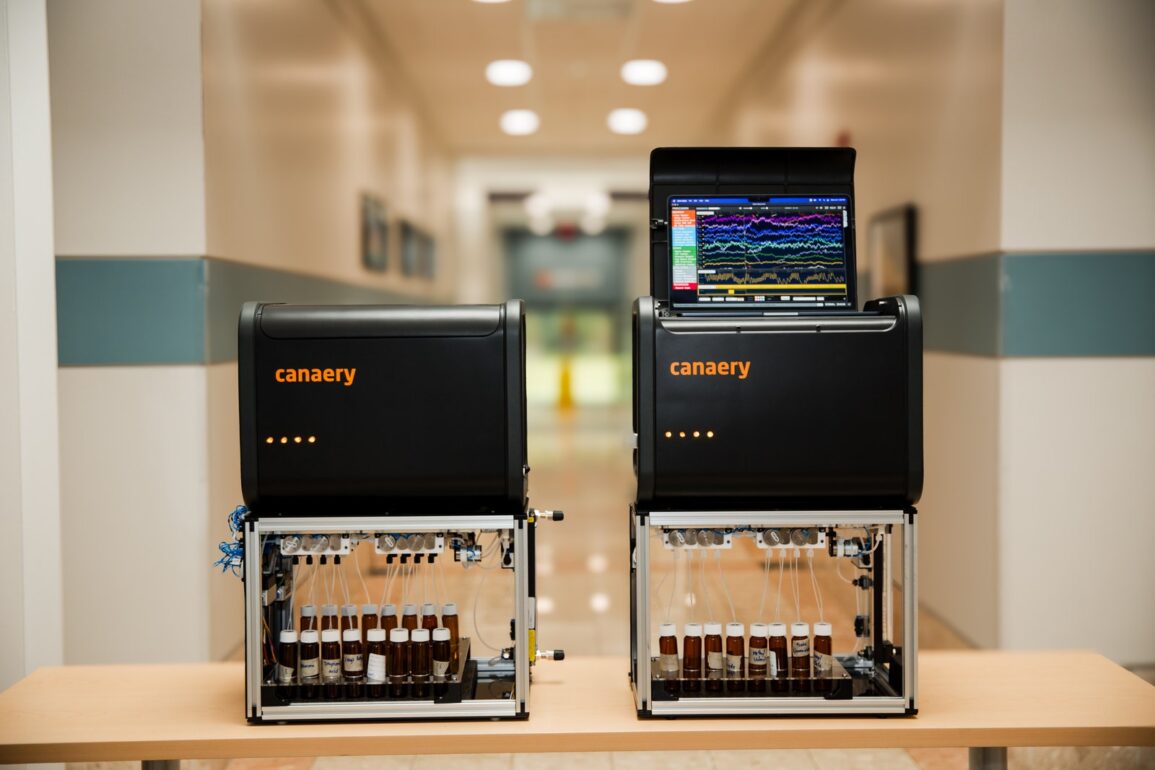
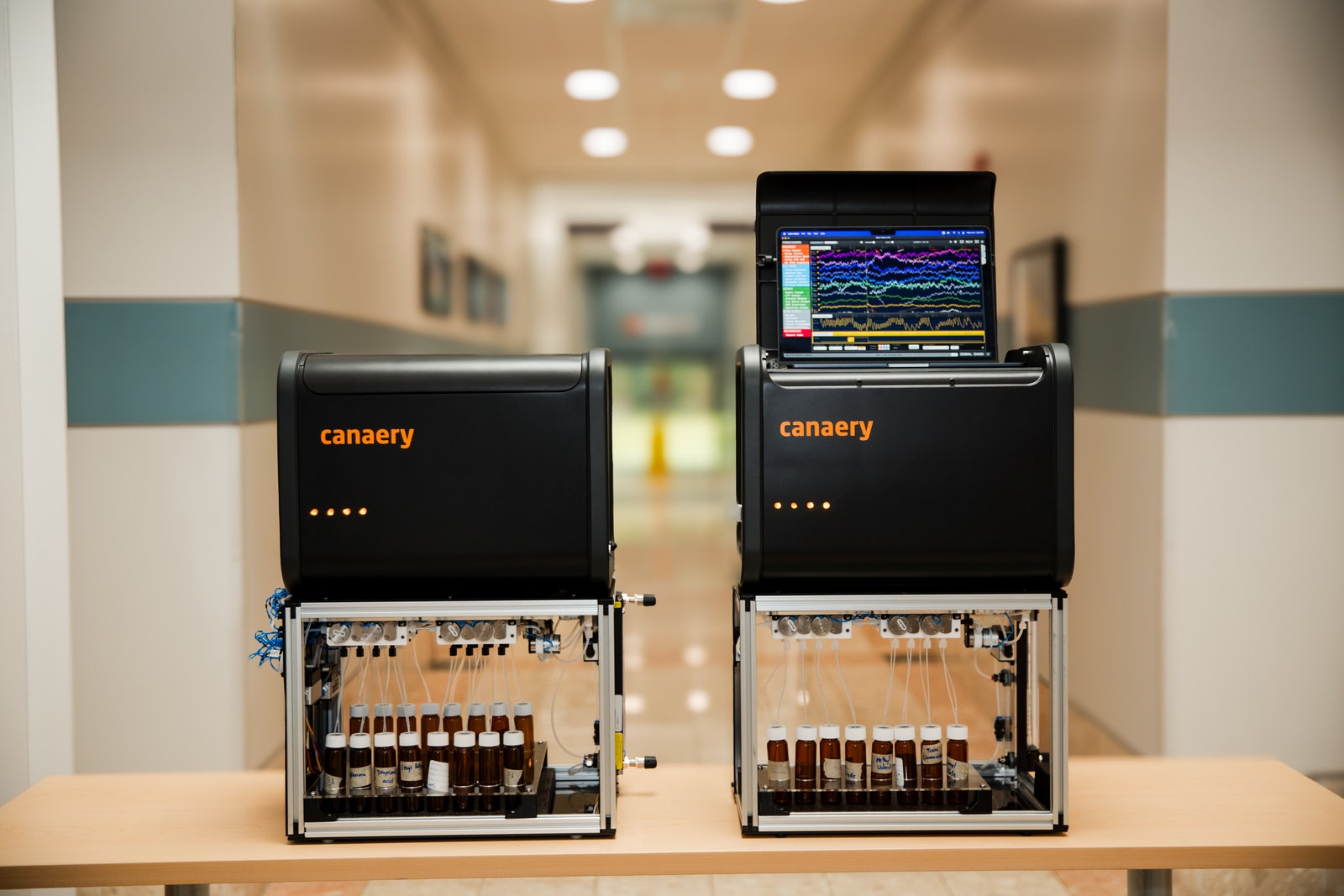
.jpg)








